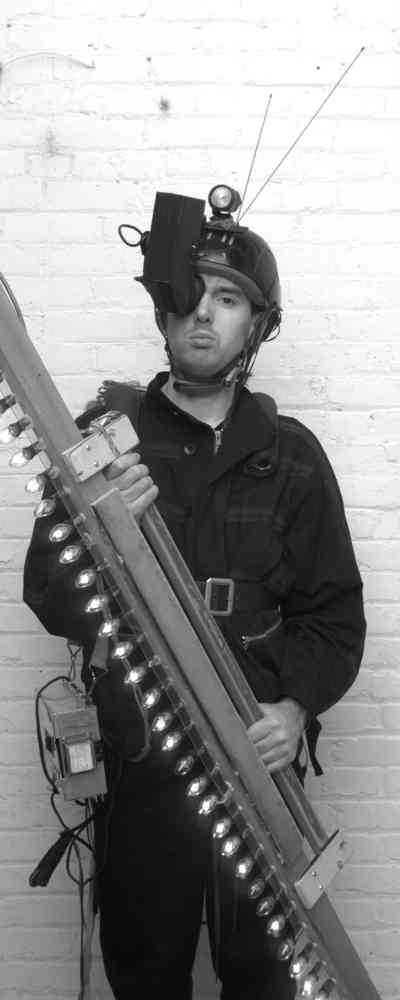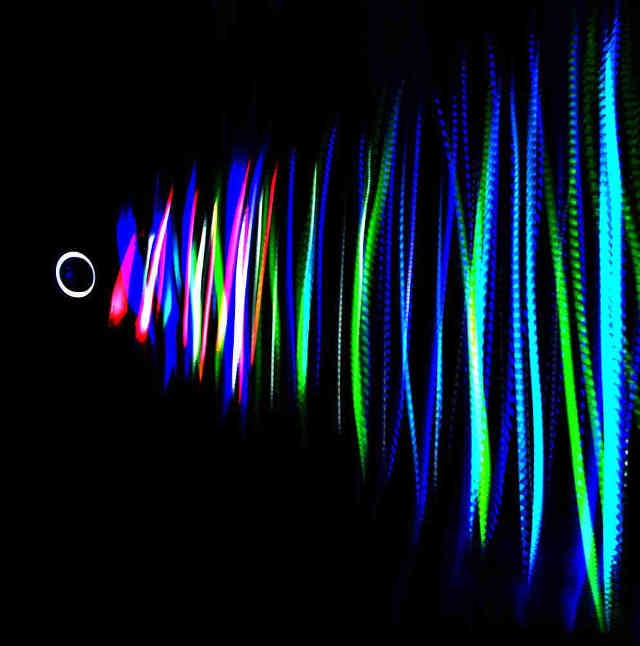


Rightmost: Coloured filters indicate sensory field of a surveillance camera in HDR pseudocolours: red indicates strong sensory field; green indicates medium strength, and blue represents weak sensory field. Picture generated from video feedback using an early vacuum tube television receiver system customized for signals intelligence by S. Mann as a "bug sweeper". Extremely high gain was possible, so that a hidden video camera could be detected from a long distance away, by way of video feedback.
As a medium of artistic expression, Mann was the first to visualize radio wave propagation as a cybernetic sensory lightpainting. See Impulse Magazine, Volume 12, Number 2, 1985, and http://wearcam.org/pov.htm.

At the time, Mann was interested in circularly polarized radio waves, and their visualization through abakography (computational lightpainting), as circular polarization was a major topic at McMaster University where he was then a student.
See also Mann's S.W.I.M. (Sequential Wave Imprinting Machine) which formed
the basis for the portfolio accompanying his successful application to
Massachusetts Institute of Technology.
S.W.I.M. Link.